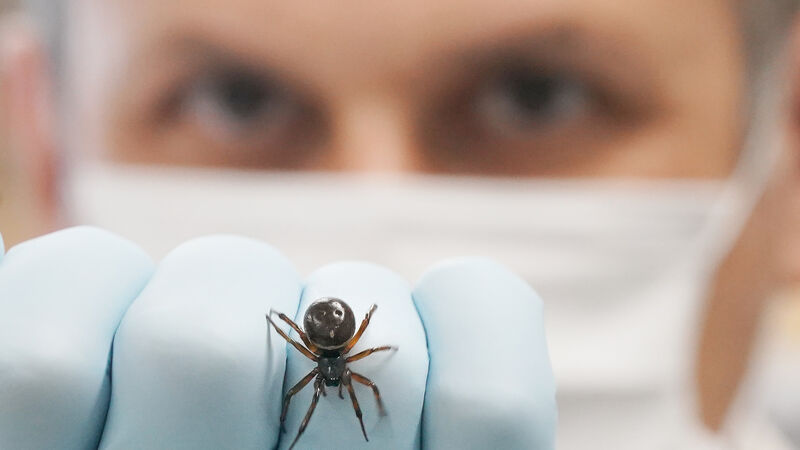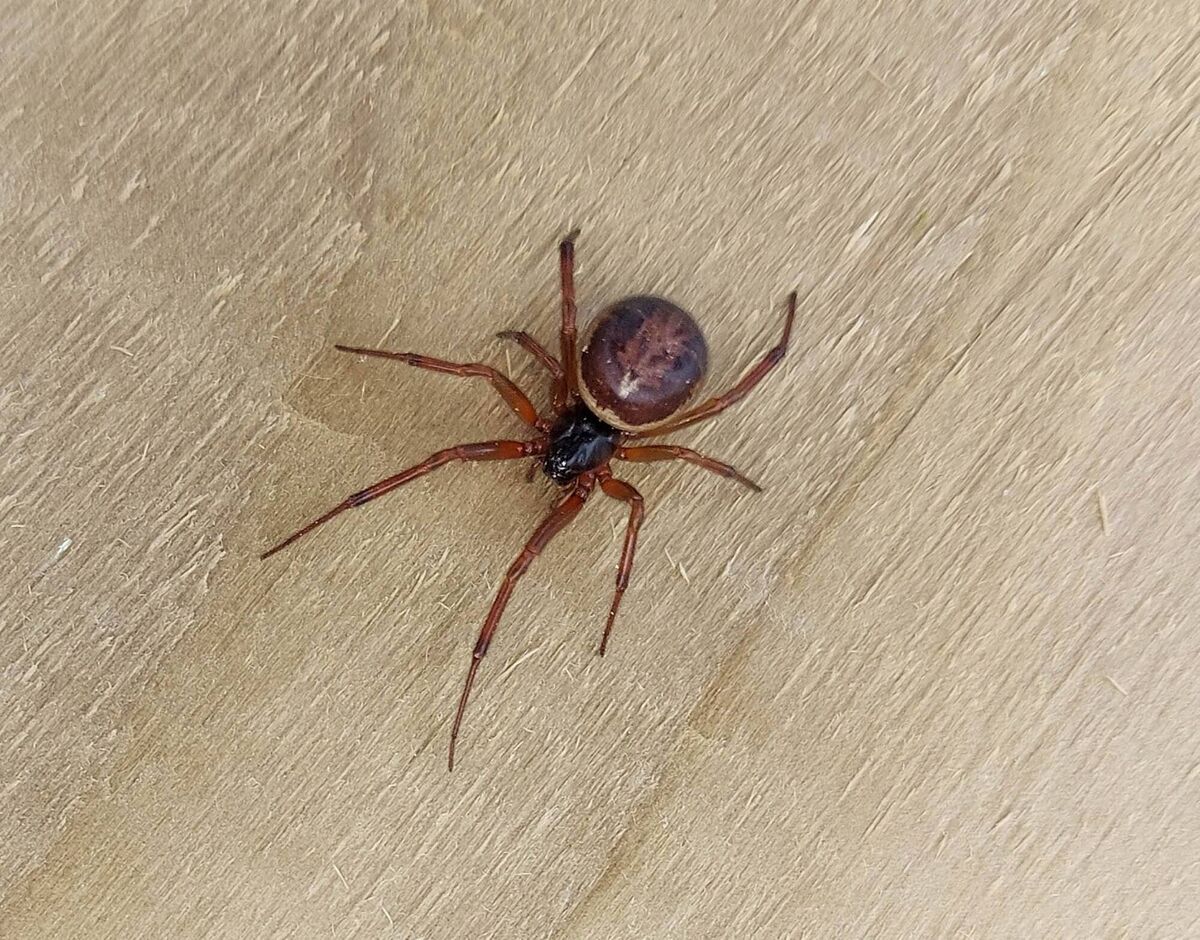False widow spider up to 230 times more venomous than native species

Dr Michel Dugon of the Venom Lab at National University of Ireland Galway with a Noble False Widow (Steatoda Nobilis) spider.
False widow spiders are up to 230 times more venomous than domestic Irish species, new research has found, which helps to explain their rapid spread throughout Ireland.
A new study from the Ryan Institute at NUI Galway charts the rapid spread of false widow spiders across the country in recent years.
The spider's bite has a similar effect on humans to a bee sting, but it may lead to more complicated injury that can require treatment in hospital.
The study, published in the international journal , has found that the false widow has stronger venom, which is up to 230 times more toxic than our native species.
The spider - originally from the Canaries - is also adept at seeing off its opponents as it can develop battle tactics in different scenarios.

Over five years, NUI scientists led by Dr Michel Dugon, have studied the spider's behaviour and characteristics including bite symptoms.
In the course of the study the spider killed and ate 95% of its opponents.
The scientists compared the attack rate success of the false widow, formally named the Steatoda nobilis, with the lace webbed spider, the giant house spider, the missing sector orb-weaver, and cellar spiders.
The findings showed that the S. nobilis spider is able to regulate its venom usage based on availability, and its venom is far more potent than native spiders.
That is why, the study states, this species of spider is "highy competitive against native European spiders sharing the same habitats."
The study has shed some light on the success of the spider's spread and dominance.
The team at NUI obtained venom yields from 550 false widow spiders for the purposes of the study, including 125 males and 425 females.
The false widow spider is a web builder, meaning it utilises its webs to facilitate prey capture in different ways, and also to defend against predators.
Before administrating venom, the spider employs a range of tactics such as prey suspension, throwing of sticky silk threads and prey wrapping.
The study from the NUI team has revealed that the spider uses a tactic called silk flicking and prey wrapping prior to envenomation as a means of venom conservation.
"This behaviour is specific to S. nobilis and contrasts with the hunting strategies of the species it is mainly in competition with," it stated.
The spider was first found in England in 1879 and has spread in nearby countries since then.










